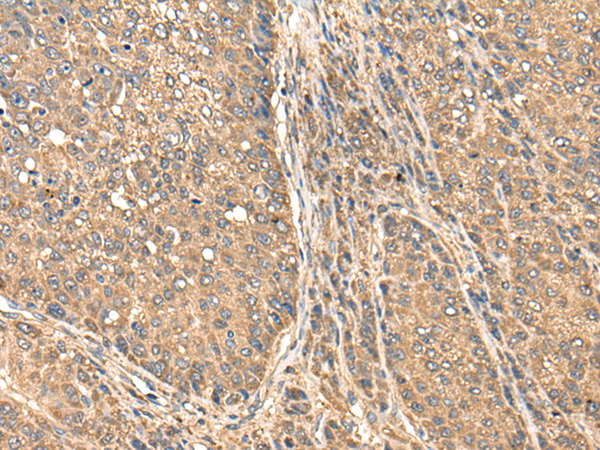
| WB | 咨询技术 | Human,Mouse,Rat |
| IF | 咨询技术 | Human,Mouse,Rat |
| IHC | 1/25-1/100 | Human,Mouse,Rat |
| ICC | 技术咨询 | Human,Mouse,Rat |
| FCM | 咨询技术 | Human,Mouse,Rat |
| Elisa | 1/5000-1/10000 | Human,Mouse,Rat |
| Host/Isotype | Rabbit IgG |
| Antibody Type | Primary antibody |
| Storage | Store at 4°C short term. Aliquot and store at -20°C long term. Avoid freeze/thaw cycles. |
| Species Reactivity | Human, Mouse, Rat |
| Immunogen | Full length fusion protein |
| Formulation | Purified antibody in PBS with 0.05% sodium azide and 50% glycerol. |
+ +
以下是关于BAALC抗体的3篇参考文献及其摘要概括:
---
1. **文献名称**: *BAALC expression predicts clinical outcome in acute myeloid leukemia*
**作者**: Baldus CD et al.
**摘要**: 该研究探讨了BAALC基因在急性髓系白血病(AML)中的预后价值,通过检测BAALC mRNA及蛋白表达水平(使用特异性抗体),发现高表达与化疗耐药和生存率低显著相关,提示BAALC可作为独立预后标志物。
---
2. **文献名称**: *Development of a monoclonal antibody against BAALC protein for leukemia diagnostics*
**作者**: Santamaría C et al.
**摘要**: 研究团队开发了一种高特异性的BAALC单克隆抗体,并通过免疫组织化学(IHC)和Western blot验证其在AML患者样本中的敏感性,证明其可用于临床检测BAALC蛋白过表达,辅助风险评估。
---
3. **文献名称**: *High BAALC expression is associated with FLT3-ITD mutation in cytogenetically normal AML*
**作者**: Schwind S et al.
**摘要**: 通过结合RT-qPCR和抗体介导的蛋白分析,研究发现BAALC高表达与FLT3-ITD突变共存时,AML患者预后更差,强调了BAALC抗体在分子分型和治疗策略中的应用潜力。
---
这些文献均涉及BAALC抗体的开发或应用,涵盖预后评估、诊断工具开发及分子机制研究。
The BAALC (Brain and Acute Leukemia, Cytoplasmic) antibody is a tool used to detect the BAALC protein, encoded by the BAALC gene located on chromosome 8q22.3. Initially identified in 2001. the BAALC gene gained attention for its role in hematopoietic malignancies, particularly acute myeloid leukemia (AML) and T-cell acute lymphoblastic leukemia (T-ALL). BAALC is highly expressed in immature hematopoietic cells and certain neuronal tissues, suggesting involvement in cell differentiation and proliferation. In leukemia, elevated BAALC expression correlates with poor prognosis, resistance to therapy, and disrupted cellular pathways linked to apoptosis and cell cycle regulation.
The BAALC antibody is primarily utilized in research to study BAALC protein expression patterns via techniques like immunohistochemistry, Western blotting, or flow cytometry. It aids in characterizing BAALC's biological functions, its role in leukemogenesis, and its potential as a diagnostic or prognostic biomarker. Studies also explore BAALC's interaction with other oncogenic proteins, such as MN1 or WT1. to unravel its contribution to disease progression. Despite its clinical relevance, BAALC's precise molecular mechanisms remain under investigation, driving ongoing research to exploit its therapeutic or diagnostic potential in hematologic cancers.
×